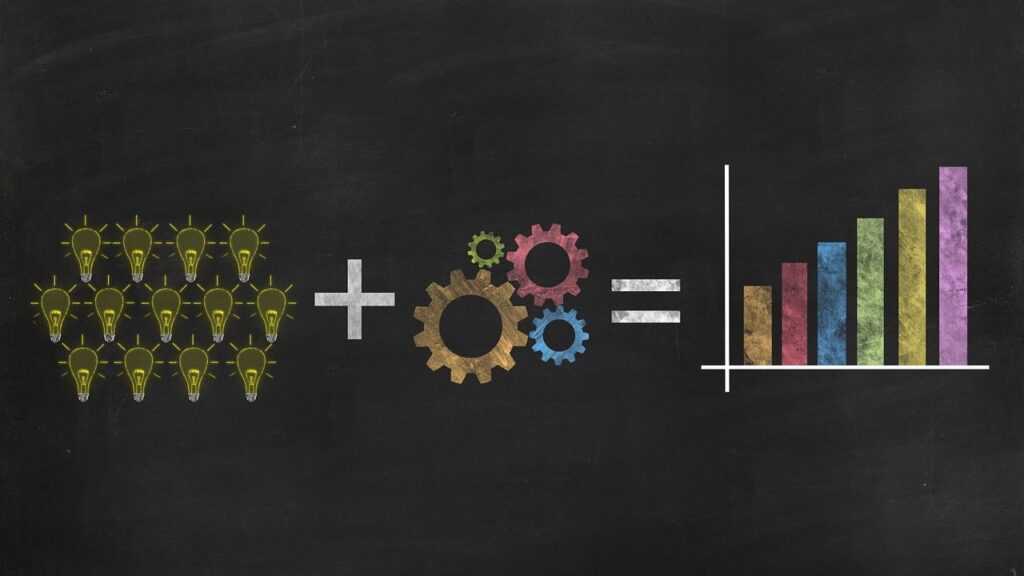Imagine a world where managing your paycheck and staying on top of your finances didn’t feel overwhelming or complicated. Introducing the “Simple Paycheck Budgeting Template,” a user-friendly tool designed to simplify the process of budgeting and help you take control of your finances. With this template, you can easily track your income, expenses, savings, and even set financial goals, all in one convenient place. No more stress or confusion when it comes to managing your money – this template makes budgeting a breeze. Say goodbye to financial worries and hello to financial freedom with the “Simple Paycheck Budgeting Template.”
Paycheck Budgeting Template

Overview
Are you tired of living paycheck to paycheck and feeling like you have no control over your finances? A paycheck budgeting template can be a game-changer for you. It is a tool that helps you effectively manage your income and expenses, allowing you to take charge of your financial health. In this article, we will explore the benefits of using a paycheck budgeting template, how to get started, and provide step-by-step guidance on budgeting your paycheck.
Benefits of Using a Paycheck Budgeting Template
Organize Your Finances
One of the biggest advantages of using a paycheck budgeting template is that it helps you get organized. With a clear and structured template, you can easily track your income and expenses, categorize your spending, and have a comprehensive overview of your financial situation. This organization allows you to better understand where your money is going and make informed decisions about your finances.
Increase Awareness of Spending Habits
Another benefit of a paycheck budgeting template is that it increases your awareness of your spending habits. By diligently recording and categorizing your expenses, you become more mindful of where your money is being spent. This newfound awareness can help you identify areas where you can cut back and make adjustments to align your spending with your financial goals.
Save Time and Effort
Using a paycheck budgeting template can significantly save you time and effort in managing your finances. Instead of manually calculating and tracking your income and expenses, a template provides a ready-made structure to input your financial information. This automation allows you to focus more on analyzing your spending patterns and making strategic financial decisions.
Reduce Financial Stress
Financial stress can be a major burden in our lives, causing anxiety and sleepless nights. A paycheck budgeting template can help alleviate this stress by providing you with a clear financial roadmap. When you have a plan in place for your income and expenses, you have a greater sense of control and can feel more confident about your financial future.
Track Your Progress
A paycheck budgeting template enables you to track your progress towards your financial goals. By regularly reviewing your budget and comparing it to your actual expenses, you can see if you’re on track or need to make adjustments. This tracking feature allows you to stay motivated and make any necessary changes to ensure you’re staying true to your budget.
Aid Decision Making
Budgeting your paycheck using a template can greatly assist you in making financial decisions. With a comprehensive picture of your income and expenses, you are able to evaluate various financial options and determine their feasibility. Whether it’s deciding on a major purchase or considering a new investment opportunity, having a budget in place gives you the information you need to make informed choices.

Getting Started
Before diving into budgeting your paycheck, it’s important to get started on the right foot. Here are some steps to help you begin your journey to financial stability:
Choose a Template Format
The first step is to choose the format of your paycheck budgeting template. You can find various templates online or create your own using spreadsheet software. The key is to select a format that is easy to understand and use.
Gather Necessary Information
Next, gather all the necessary information to populate your budgeting template. This includes your income sources, fixed expenses, variable expenses, savings goals, and any outstanding debt. Collecting these details will give you a comprehensive view of your financial landscape and guide your budgeting decisions.
Set Financial Goals
Before allocating your funds, it’s essential to set clear financial goals. What do you want to achieve with your money? Is it saving for a dream vacation, paying off debt, or building an emergency fund? Defining your goals will give you purpose and direction in budgeting your paycheck.
Step 1: Determine Your Income
To start budgeting your paycheck, you need to determine your income. This involves calculating your net pay, considering any additional sources of income, and determining the frequency of your pay.
Calculate Your Net Pay
Your net pay is the amount of money you receive after deductions such as taxes and other withholdings. Calculate this by subtracting these deductions from your gross income. The net pay is the amount you will use as a basis for budgeting.
Consider Additional Sources of Income
In addition to your regular paycheck, you may have other sources of income. These can include side hustles, rental income, or investment dividends. Take into account these additional sources to get an accurate picture of your overall income.
Determine Your Pay Frequency
Understanding the frequency of your pay is crucial for budgeting purposes. Whether you receive a weekly, biweekly, or monthly paycheck, knowing the exact timing of your income will help you better allocate your funds throughout the budgeting period.

Step 2: Calculate Fixed Expenses
Fixed expenses refer to the recurring costs that remain relatively constant from month to month. They are essential to consider when budgeting your paycheck.
List Your Monthly Fixed Expenses
Start by listing all your monthly fixed expenses. These can include rent/mortgage payments, utility bills, insurance premiums, loan repayments, and any subscriptions or memberships you have. Having a comprehensive list ensures that you don’t overlook any important expenses.
Categorize and Calculate Each Expense
Categorize each expense according to its type, such as housing, transportation, healthcare, and entertainment. This categorization will give you an overview of where your money is going and allow you to identify any areas where you can potentially reduce your spending. Calculate the exact amount for each expense to get an accurate picture of your fixed costs.
Include Essential and Non-Essential Expenses
When calculating fixed expenses, make sure to include both essential and non-essential expenses. While essential expenses are necessary for day-to-day living, non-essential expenses are discretionary and can be adjusted if needed. Separating these expenses will help you prioritize your spending and make informed decisions when necessary.
Step 3: Track Variable Expenses
Variable expenses are costs that can fluctuate from month to month. Tracking these expenses is crucial for staying within your budget and maintaining financial stability.
Identify Your Variable Expenses
Variable expenses can include groceries, dining out, transportation costs, entertainment, clothing, and any other discretionary spending. These expenses tend to vary each month, making it important to closely monitor and track them.
Record and Categorize Variable Expenses
Begin recording your variable expenses by tracking each purchase and categorizing it accordingly. You can use a simple notebook, a smartphone app, or a dedicated expense tracking tool. Categorizing your expenses will give you insights into where your money is going and help identify areas where you can potentially cut back.
Track and Review Your Spending
Consistently track and review your variable expenses on a regular basis. This will allow you to identify any spending patterns, notice areas where you tend to overspend, and make necessary adjustments. By staying on top of your variable expenses, you can ensure that your budget remains intact and aligned with your financial goals.
Step 4: Allocate Funds for Savings and Debt Repayment
Saving money and repaying debts are crucial steps towards financial stability. Allocate a portion of your income to these goals to ensure that you’re making progress.
Set Savings Goals
Define your savings goals based on your financial priorities. Whether it’s building an emergency fund, saving for a down payment on a home, or planning for retirement, having specific goals will provide you with motivation and clarity. Allocate a portion of your income towards savings to bring you closer to achieving these goals.
Determine Debt Repayment Strategy
If you have outstanding debt, it’s important to create a strategy for repayment. Prioritize high-interest debts and consider various approaches, such as the snowball or avalanche method, to tackle your debt effectively. Allocating funds towards debt repayments will help you become debt-free sooner and save money on interest payments.
Automate Savings and Debt Payments
To ensure that you stick to your savings and debt repayment goals, automate these payments. Set up automatic transfers from your checking account to a dedicated savings account or towards your debt each time you receive your paycheck. This not only ensures consistent contributions but also eliminates the temptation to spend these funds elsewhere.
Step 5: Review and Adjust
A budget is not meant to be set in stone. It requires regular review and adjustment to adapt to changing circumstances and financial goals.
Regularly Review Your Budget
Make it a habit to review your budget at regular intervals. This will allow you to assess your progress, identify any discrepancies, and make any necessary adjustments. Budget reviews provide you with insights into areas where you can improve and ensure that your budget remains aligned with your financial goals.
Track Your Progress
Track your progress towards your financial goals using the budgeting template. Regularly update your budget with your actual income and expenses to accurately monitor your financial health. Tracking your progress adds accountability and motivation, helping you stay committed to your budget.
Adjust Your Budget as Needed
Life is unpredictable, and your financial goals may change over time. It’s important to be flexible and adjust your budget as needed. If you experience a change in income, have unexpected expenses, or need to reallocate funds, be proactive in making the necessary adjustments. Remember, your budget should always reflect your current financial situation and priorities.
Tips for Using the Paycheck Budgeting Template
Here are some additional tips to make the most out of your paycheck budgeting template:
-
Be realistic: When allocating funds, be realistic about your income and expenses. Overestimating your income or underestimating your expenses can lead to frustration and a shortfall in your budget.
-
Track every expense: Don’t overlook small expenses. Every purchase, no matter how insignificant it may seem, should be recorded and categorized. These small expenses can add up over time and impact your overall budget.
-
Be flexible: Life is full of surprises, and your budget should be able to adapt to unforeseen circumstances. Be flexible and prepared to make adjustments to your budget when necessary.
-
Seek support and accountability: Share your budgeting journey with a trusted friend or family member who can provide support and hold you accountable. Having someone to discuss your progress and challenges with can make a significant difference in staying motivated.
-
Celebrate milestones: Acknowledge and celebrate your financial milestones along the way. Whether it’s paying off a debt or reaching a savings goal, take the time to recognize your achievements and reward yourself for your hard work and discipline.
Conclusion
Budgeting your paycheck using a paycheck budgeting template is a powerful tool for taking control of your finances. By organizing your income and expenses, increasing awareness of your spending habits, and setting financial goals, you can achieve financial stability and reduce stress. Remember to regularly review and adjust your budget, track your progress, and celebrate your milestones. With the right mindset and the help of a paycheck budgeting template, you can confidently navigate your financial journey and create a brighter future for yourself.

